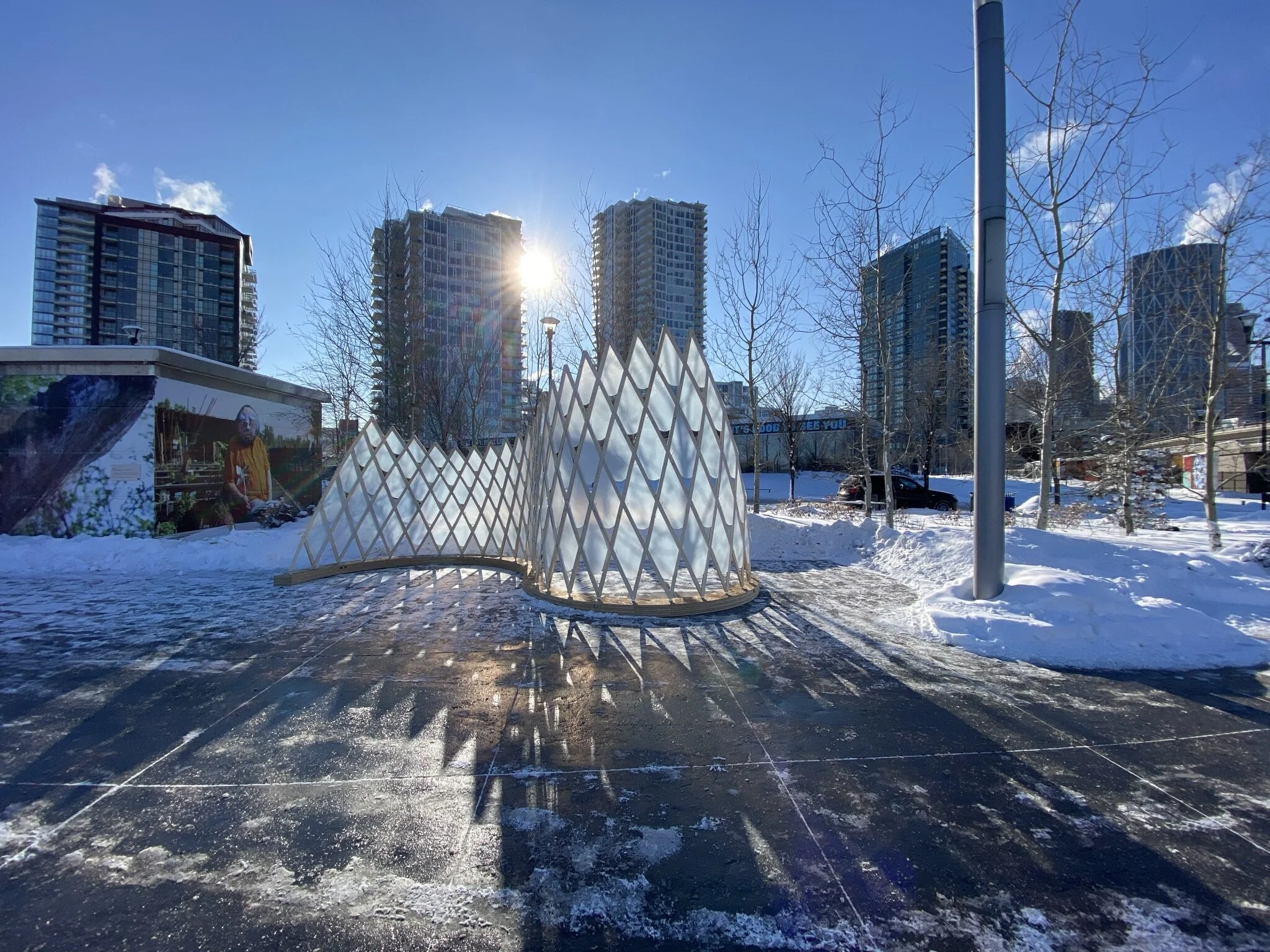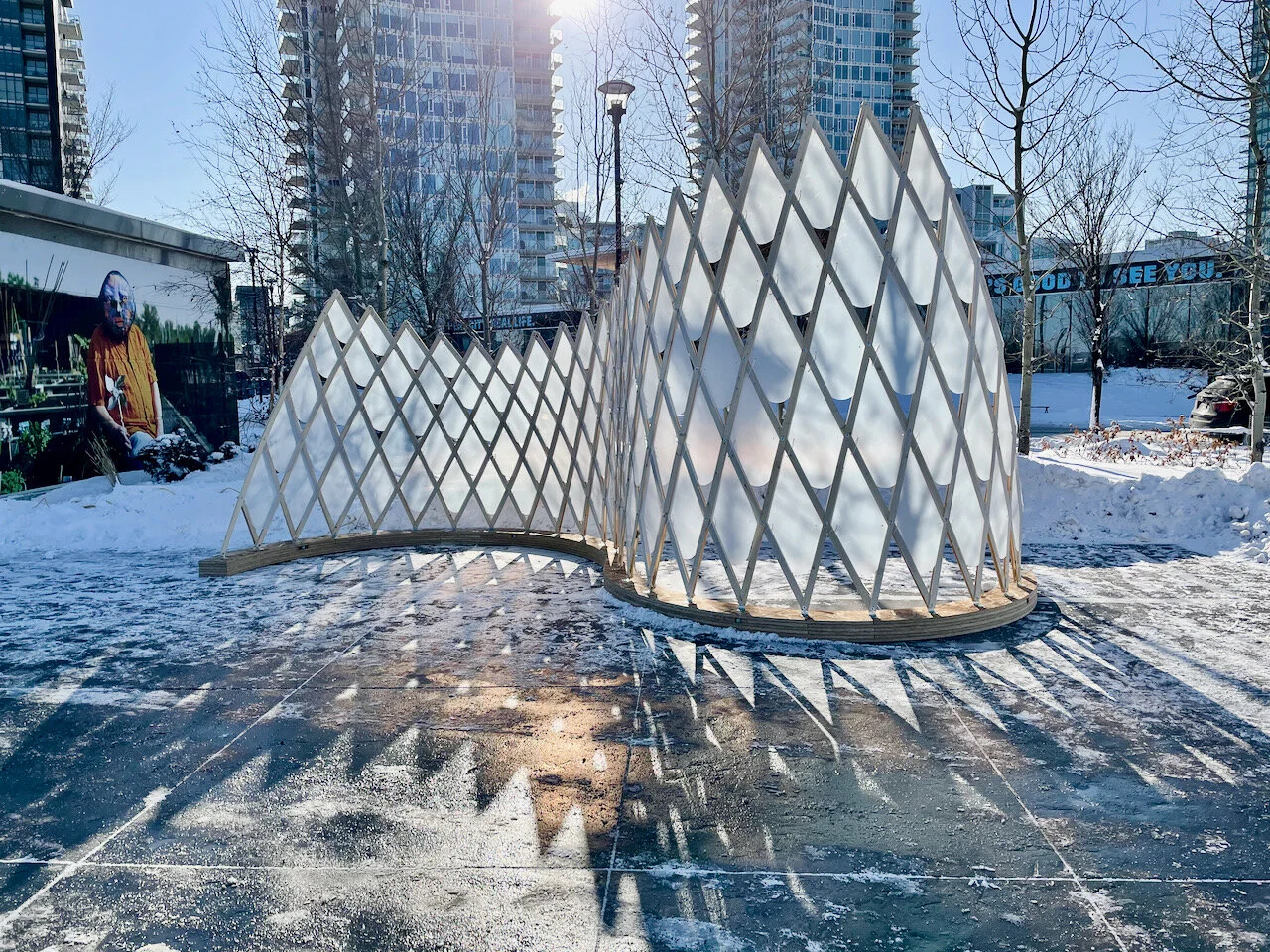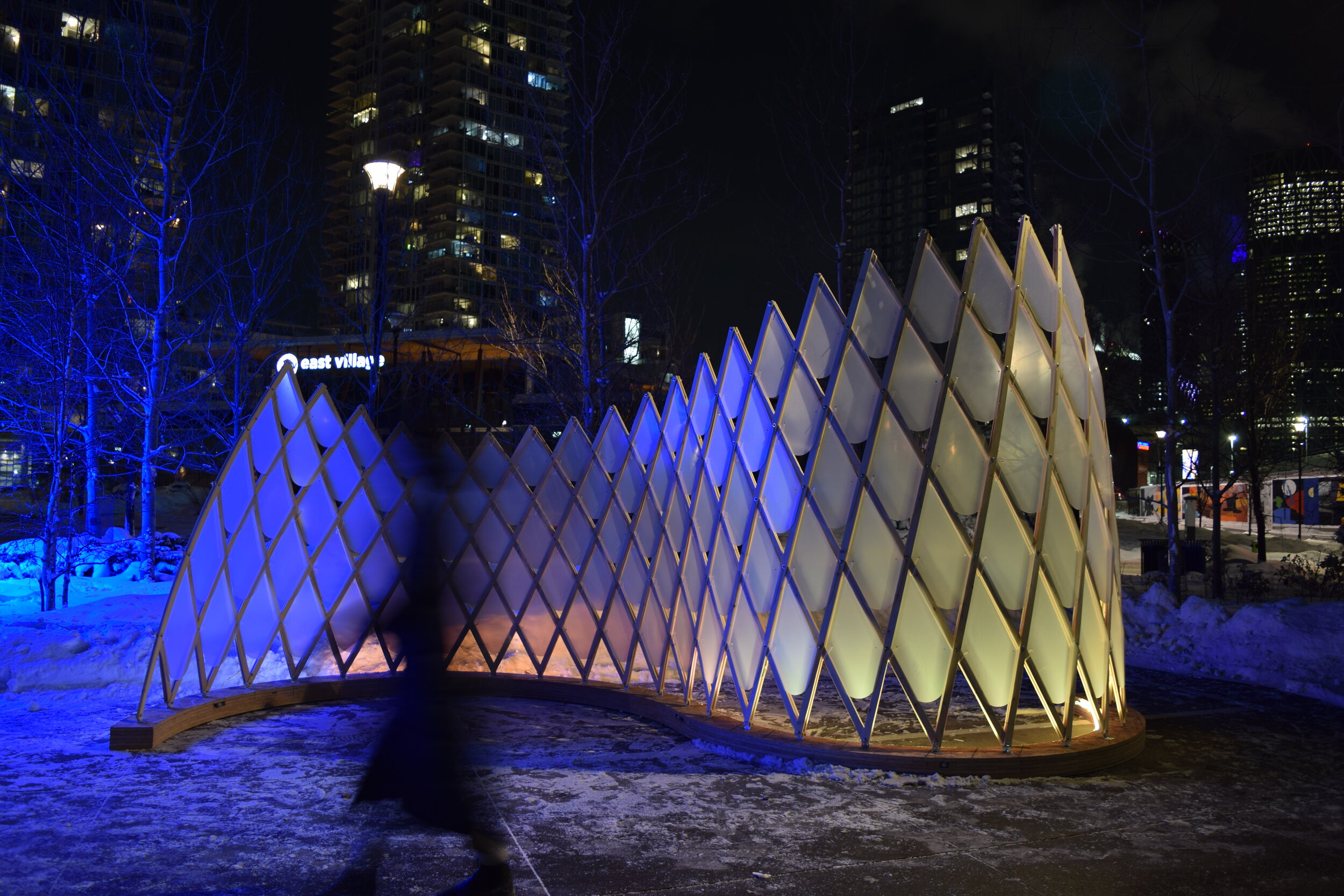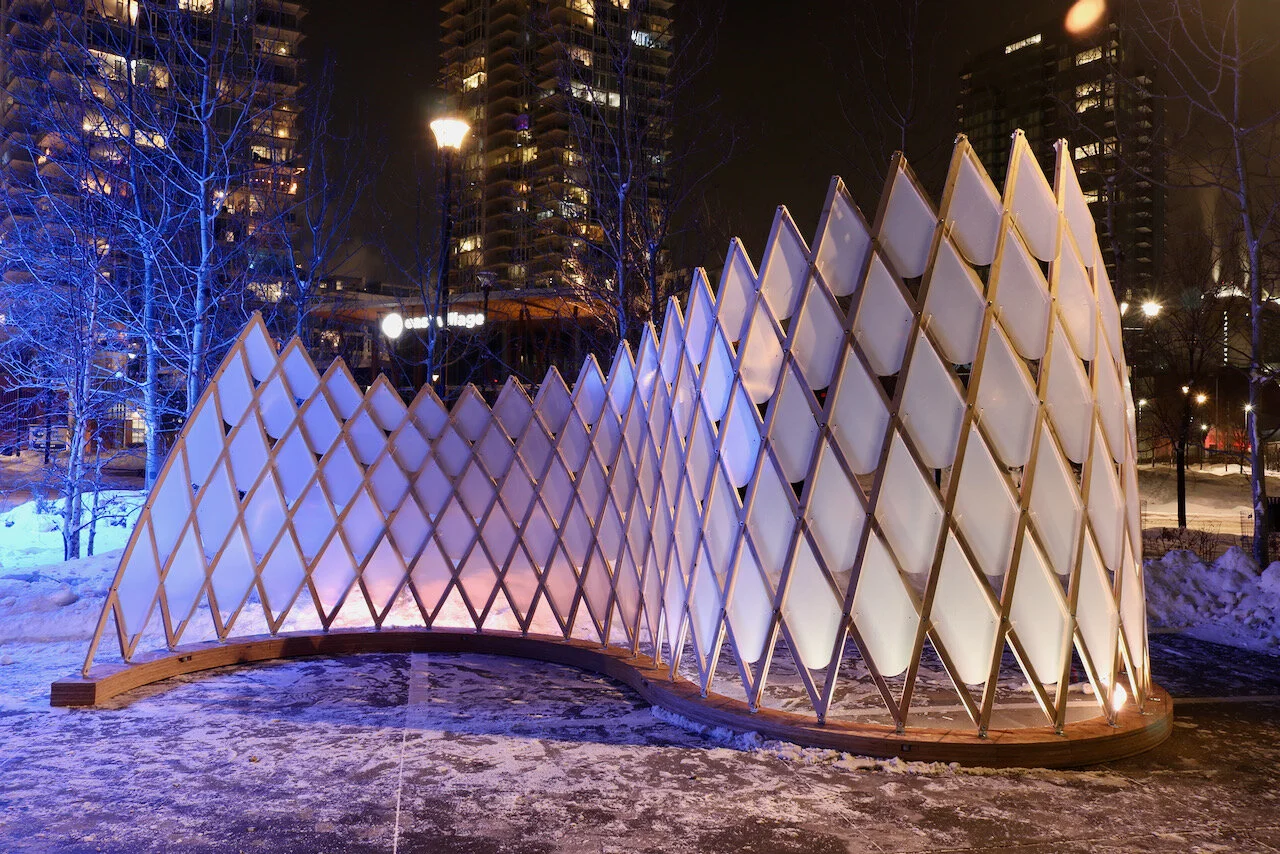Chinook Blast brings visual treats to every 'Nook' and Cranny
You may have noticed that East Village has gotten even more colourful these days.
Chinook Blast kicked off on Feb 12 bringing a round up of eye-popping and heart-warming outdoor experiences to downtown Calgary, including a stellar lineup right here in East Village.
One such installation that might have caught your eye as you stroll along RiverWalk is The Nook, a motion-activated light installation and brainchild of Master of Architecture students Jonathan Monfries and Madisen Killingswoth. Monfries and Killingsworth share a passion for activating public realms through tactical urbanism and believe that public realms can be improved to support vibrancy and sense of place.
Monfries and Kiillingsworth share more about the inspiration behind this installation and why it’s the perfect addition to East Village.
Note: The motion-activation of the light feature of The Nook was damaged and is no longer functional.
This installation is titled The Nook, can you tell us how it got its name?
The name comes from creating a special warming moment in a winter cityscape, and therefore the installation represents two nooks within the landscape.
We love having The Nook in East Village? What makes this installation a perfect addition to the neighbourhood?
The installation plays on the existing pedestrian movement within East Village along the RiverWalk pathway. It complements the existing light installations in the area, contributing to the overall sense of community and vibrancy.
Was there anything that inspired the conceptualization of this piece?
The piece was inspired by vibrancy in the winter as well as COVID-19 on multiple levels. From the idea of bringing life and vibrancy to a dark and isolated time, to the reimagination of plexi-glass which is a material that has become prevalent over the past year.
Did COVID impact your design process and outcome?
We wanted to provide a way of interacting with the installation safely even with all the pandemic protocols. So the lighting design with motion sensors came from the ability to safely interact with the installation at a distance.
Were there any significant challenges or learnings that came throughout the build of this installation?
The design went through many iterations to take into account the COVID protocols while also ensuring it provided a playful, interactive experience. We learned about the flexibility of wood and its ability to be manipulated and bent into form. It was an exploration of structural creativity, studying how to design and fabricate a light-weight gridshell structure.
The installation feels different depending on whether you experience it during the day or night. Was that intentional?
Yes! The installation glows naturally in the day with the frosted plexi-glass envelope and the interactive lighting brings life to the long winter evenings.
The use of light in this installation design brings energy and motion, can you talk about why/if that was important? And as a secondary question, can you talk about how you see light installations evolving in the future?
Light installations can and should be responsive and dynamic so that there is a connection between the light and the people who experience it. We feel that lighting has the ability to bring warmth and life to dark winter nights.
As Architecture students, can you talk a little bit about activating public spaces with installations such as The Nook. How do these things shape the place they are in or vice versa. And, to add onto this question, are there any trends in placemaking that you are paying attention to right now that are shifting your own perspective on design?
Bringing art into the neighbourhood supports local artists while ensuring that the art is accessible for the public to appreciate. We feel that providing chance encounters with art can contribute to an overall sense of place and a feeling of community. Regarding trends in placemaking, tactical urbanism provides cost-effective, temporary improvements to public spaces as a test-fit to see the effects of these improvements before permanent changes are made. Design-build installations like The Nook are one method of experimentation in ways to improve the public realm.
Finally, how do you hope people interact with the installation and what do you anticipate people will feel while interacting with it?
We hope that The Nook captures the attention of Calgarians, bringing them to East Village and to the RiverWalk. The transitioning of cool to warm lighting when being interacted with brings the feeling of warmth to the cold winter evenings.
Rapid Fire Questions:
Other than The Nook, what’s your favourite thing at Chinook Blast this year?
We are big fans of Panaudicon - another installation done by some of our peers at the School of Architecture, Planning, and Landscape.
What’s your favourite thing to do during a Chinook?
Getting out for some patio brews (pre-COVID of course)
What was the first thing you did when you finished The Nook?
Celebratory Zoom beers with the team (us).
You can find The Nook along RiverWalk, right beside the SImmons building. Find out more about Chinook Blast in East Village here and the full Chinook Blast lineup here. Show us how you are doing Chinook Blast in East VIllage by tagging #eastvillageyyc and #chinookblast.
Get outside and enjoy the vibrancy of our city this winter!
Each activity is designed with AHS protocols in mind to help you (and others) stay safe.
Your social calendar can thank 10 key Calgary organizations for bringing it back to life: City of Calgary, Tourism Calgary, Calgary Arts Development, Calgary Municipal Land Corporation, Downtown Calgary, One Yellow Rabbit, Calgary Folk Music Festival, TELUS Convention Centre, Arts Commons, and ENMAX.
Chinook Blast 2021 is powered by Shaw.




